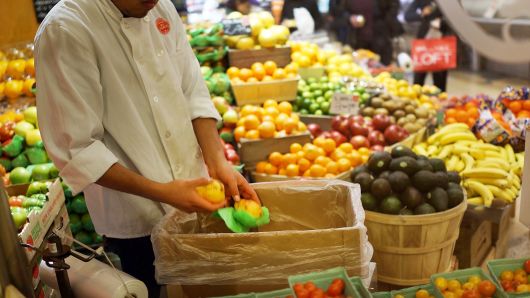
Spencer Platt | Getty Images
A man places bruised fruit in a bin at a market on January 10, 2013 in New York City.
“What this technology, and other technologies, allows you to do is be a lot more predictive: How should this product be sorted, ripened, distributed best in accordance with its chemical composition or its shelf life?” Ramanan told CNBC’s Akiko Fujita and Martin Soong.
“It really infuses the supply chain with digital technology so you can make better decisions earlier on and reduce waste, but also reduce product recalls, prevent rejections, and deliver a better quality product to consumers,” she continued.
Not only will that mean huge cost-savings for food producers and higher quality products, it is also a viable solution to the prospect of growing global food shortages, Ramanan said.
It is estimated that as much as one third of all food is wasted, costing producers $1 trillion annually, according to ImpactVision. Meanwhile, millions of people go hungry every day — and that’s set to continue as the global population balloons.
“We have to feed a population of 10 billion in the near future and we have to do that with less resources,” Ramanan noted. “We need to decrease the amount of land, energy and water that is being put into the food system (and) really improve the way that food is distributed through the supply chain.”
 EU News Digest Latest News & Updates
EU News Digest Latest News & Updates


